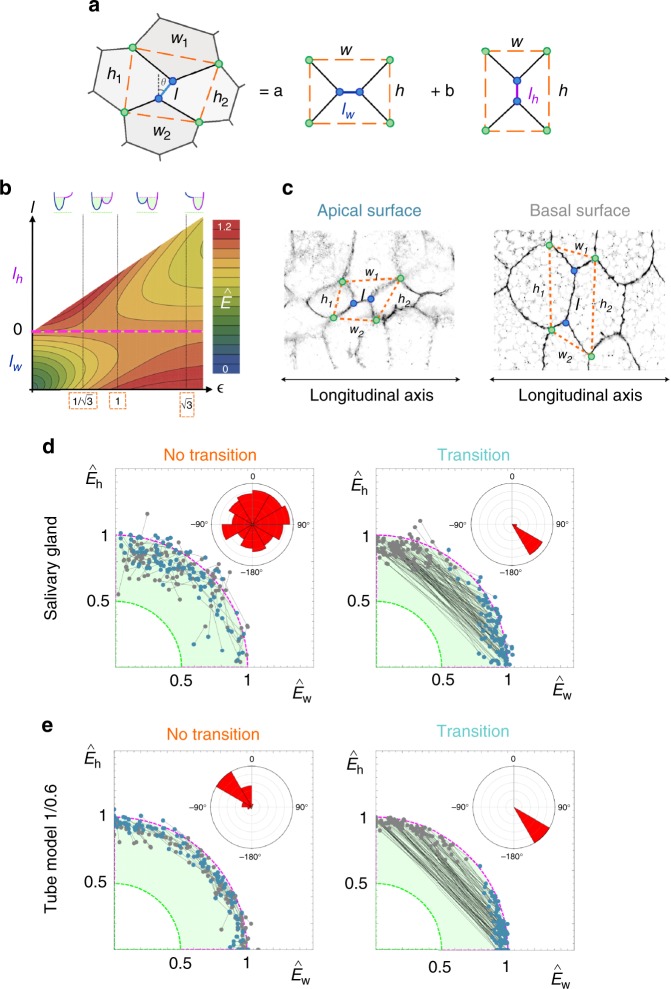Fig. 4.
Energy minimization on tubular epithelia. a Packing configurations are characterized by four-cells motifs. Our theoretical argument to explain packing relies on line-tension energy minimization. Two idealized, stable, packing configurations are possible along the apico-basal axis as represented by lw and lw. We decompose the experimental measured value of the line-tension energy into these fundamental modes. b Density plot of the energy profile (dimensionless) as a function of the aspect ratio, , and l (in units of w) as obtained by the theoretical model. If the only stable configuration is lw, if the only stable configuration is lh, and if both configurations are stable. Cells adopt the “scutoidal” shape when there is a transition. The dashed magenta line indicates the location of the unstable configuration . The potential wells (top) indicate schematically the shape of the energy profile within each zone: the green-shaded regions indicate the stable energy attractors and the green dotted line the absolute energy minimum (see d, e). c Scheme showing how the experimental values for h, w, and l were measured in the apical and basal surfaces. Four-cell motifs were identified and we characterized the aspect ratio by measuring and . d–e Decomposition of the tensile energies into the fundamental modes and (Methods) for apico-basal events in salivary glands (d) and 1/0.6 Voronoi tubes (e): “no transition” (left) “transition” (right) events. Individual packing configuration are represented by connected dots that account for the energy at the basal (grey) and apical (blue) surfaces. The magenta and green dotted lines indicate the theoretical energy levels of the unstable fourfold configuration and the absolute energy minimum respectively. The stable energy attractors are located within the green-shaded region. Insets: polar histogram accounting for the directionality of the trajectories from basal to apical

